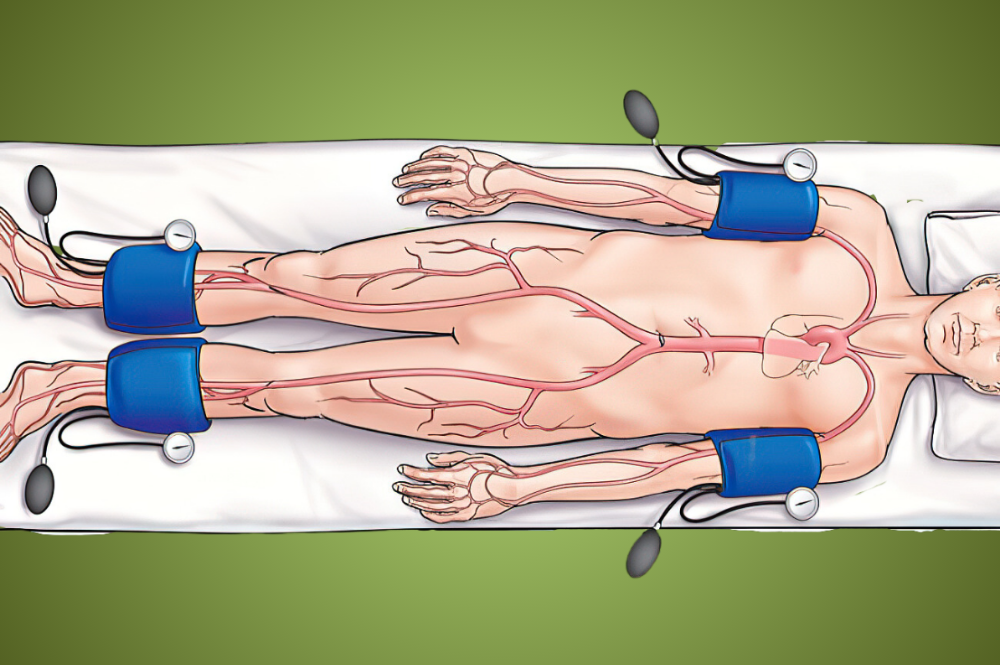Preparing For Your ABI Test: A Step-By-Step Guide

If you’ve been scheduled for an Ankle-Brachial Index (ABI) test, congratulations! You’re taking a proactive step towards safeguarding your health. The ABI test is a simple, painless procedure that plays a crucial role in assessing peripheral arterial disease (PAD) in a clinical setting. PAD is a common condition characterized by a narrowing of the arteries in the legs due to a buildup of plaque (atherosclerosis). This narrowing can restrict blood flow, potentially leading to pain, claudication (leg pain with activity that improves with rest), and even tissue death in severe cases. Early detection of PAD is essential to prevent these complications. In this comprehensive guide, we’ll walk you through every step of the ABI test, from start to finish, so you can approach it with confidence and understanding.
Section 1: Preparing for Your ABI Test
Before your ABI test, it’s important to know what to expect and how to prepare. Here are some tips:
- Dress Comfortably: Wear loose, comfortable clothing that allows easy access to your arms and legs. Avoid tight socks or stockings that might interfere with blood flow.
- Avoid Caffeine and Smoking: On the day of your test, try to avoid caffeine and refrain from smoking. Both can affect blood circulation and influence test results.
Section 2: Understanding the Procedure
The ABI test is a straightforward, painless, and quick outpatient procedure, typically taking around 15-30 minutes. Here’s what to expect:
- Welcome and Preparation: A friendly healthcare professional will greet you, explain the procedure, and answer any questions you may have. They’ll guide you to a comfortable examination room.
- Relaxing and Getting Comfortable: You’ll be comfortably positioned lying supine (on your back) on an examination table for at least 5 minutes before measurements are taken. This allows for resting blood pressure readings.
- Blood Pressure Cuff Placement: Pneumatic cuffs will be placed on your upper arms (one on each) and on your ankles (one on each foot) over the dorsalis pedis and posterior tibial arteries. The healthcare professional will locate the highest palpable pulse in each foot for cuff placement.
- Blood Pressure Measurements: The cuffs will automatically inflate, gradually squeezing and then releasing the pressure. This process is repeated several times to obtain accurate measurements.
- Recording Results: The blood pressure measurements from your arms and ankles are recorded. This information is used to calculate your Ankle-Brachial Index.
Section 3: ABI Calculation and Interpretation:
The ABI is calculated by dividing the higher ankle systolic blood pressure by the higher brachial (arm) systolic blood pressure. Here’s a general interpretation guide for the ABI results:
- Normal ABI (0.90 – 1.30): This indicates normal or minimal arterial insufficiency.
- Borderline ABI (0.90 – 0.99): While not diagnostic of PAD, this may warrant further testing with a toe pressure measurement or pulse volume recordings (PVRs) to obtain a clearer picture of arterial flow.
- Low ABI (< 0.90): This suggests significant arterial occlusive disease. The severity of PAD can be further categorized based on the ABI value:
- Mild PAD (0.70 – 0.89)
- Moderate PAD (0.40 – 0.69)
- Severe PAD (< 0.40)
- High ABI (> 1.30): While less common, this could indicate non-compressible arteries due to medial calcification, which may limit the diagnostic accuracy of the ABI test.
Section 4: What Happens After the Test
Once the ABI test is complete, your healthcare provider will discuss the results with you. Depending on your results, they may recommend further tests, lifestyle changes, or treatments. Remember, a low ABI result doesn’t mean you have PAD; it’s just an indication that further investigation is needed.
- Discussion of Results:Your doctor will explain your ABI score in detail, addressing any concerns you may have and outlining the implications for your vascular health. They will also discuss the potential risks and complications associated with PAD.
- Further Testing (if needed): If your ABI results indicate potential issues, your healthcare provider may recommend additional tests, such as Doppler ultrasound, CT angiography, or magnetic resonance angiography, to get a clearer picture of your vascular health.
- Lifestyle Recommendations: Depending on your ABI results and overall health, your provider might suggest lifestyle changes, such as quitting smoking, adopting a heart-healthy diet, increasing physical activity, and managing conditions like diabetes and hypertension.
- Medical Interventions: In more severe cases, medical interventions, such as medication, angioplasty, or surgery, may be considered to improve blood flow and manage PAD.
The ABI test is a simple yet powerful tool that provides valuable insights into your vascular health, specifically focusing on blood flow in your legs. Understanding the test process and the meaning behind your results empowers you to take a proactive approach to your well-being. Early detection of potential issues allows for prompt intervention and management, ultimately helping you maintain healthy legs for years to come. If you have any questions about the ABI test or vascular health in general, don’t hesitate to talk to your doctor. They can address your concerns and provide personalized guidance.
